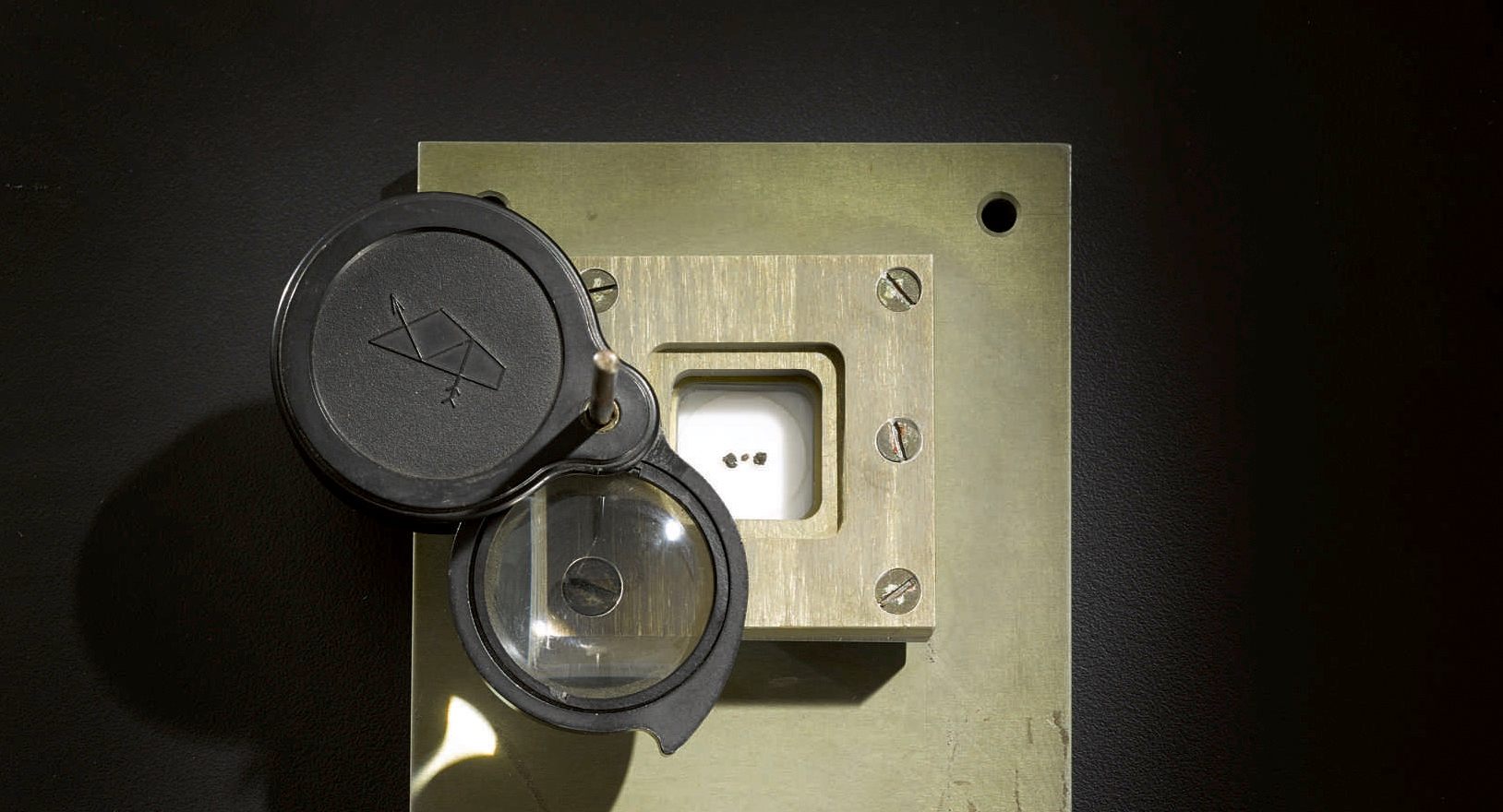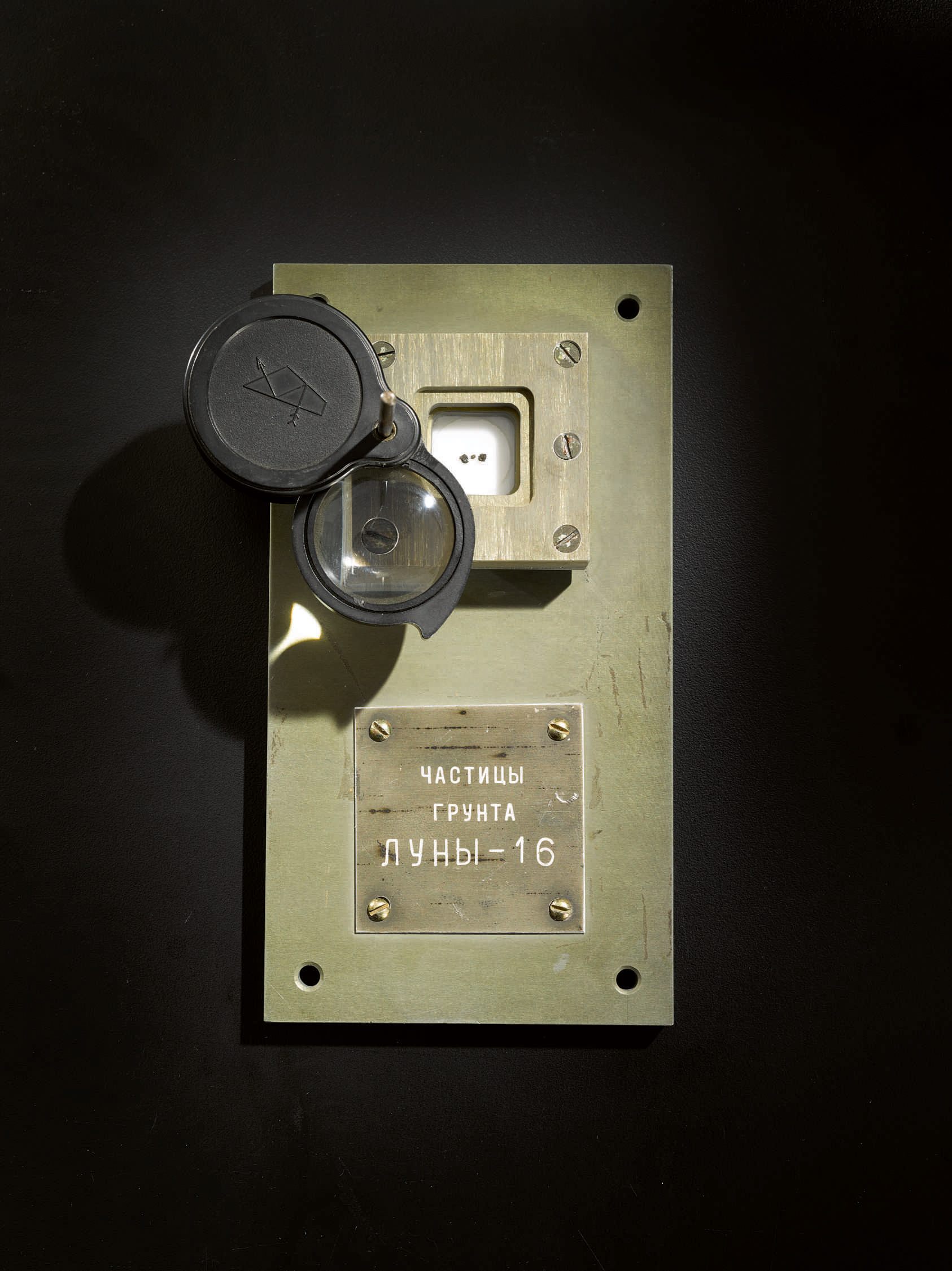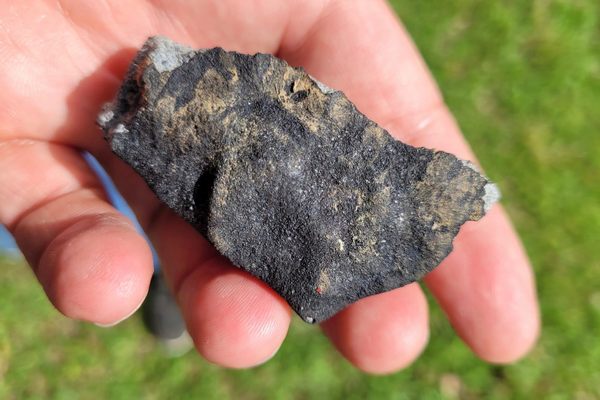For Sale: Very, Very Tiny Pieces of the Moon
These samples of lunar soil are very expensive, too.

Maybe you missed your chance, a few weeks back, to bid on a 12-pound assortment of interlocking lunar meteorites that rained down in Northwest Africa in 2017. These fragments—dubbed NWA 11789 and “Buagaba”—are significantly larger than most other meteorites that crash to Earth, which typically fall somewhere between 0.2 and 0.5 pounds. Maybe you didn’t have a place to proudly display a dozen pounds of extraordinary rock—or maybe you couldn’t rustle up enough change to outbid the winning $612,500 offer.
If you’re short on space but big on enthusiasm for extraterrestrial geology, you’ve got another chance to bring some home. Three little lunar samples will go under the hammer at Sotheby’s on November 29, in an auction dedicated to space exploration.
The trio of tiny rocks was collected by the unmanned Soviet craft Luna-16 in 1970. It landed on the Mare Fecunditatis, dug 13 inches into the ground, and carried a core sample 238,900 miles back to Earth.


The little chunks of basalt and regolith sit together under glass inside a metal block. An adjustable lens magnifies the view—which is helpful, because the rocks range from one to two square millimeters. An inscription reads, in Russian, “ЧАСТИЦЫ ГРУНТА ЛУНЫ-16” (or, “soil particles from Luna-16”).

These last went up for sale in 1993, sold by Nina Ivanova Koroleva, the widow of Sergei Korolev, former director of the Soviet space program. An American collector snatched them up for $442,500, and they’ve been in a private collection ever since. Sotheby’s expects them to go for between $700,000 and $1 million this time around.
It’s pretty unusual to have a chance to snag a piece of the Moon, large or small. The out-of-this-world price tag will certainly limit the number of people who can bid. If the asking price for these slivers of the Moon is too steep, you can always step outside at night and look up at the whole thing.












Follow us on Twitter to get the latest on the world's hidden wonders.
Like us on Facebook to get the latest on the world's hidden wonders.
Follow us on Twitter Like us on Facebook